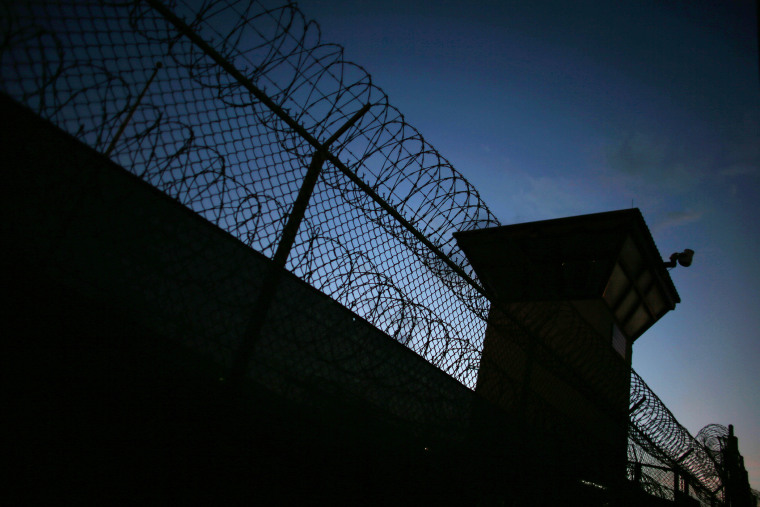The White House is nearly finished with a plan to close the infamous detention facility at Guantanamo Bay, spokesman Josh Earnest announced Wednesday. Closing the controversial prison would be a monumental victory for human rights and the rule of law, not to mention for the lives of the detainees affected. But supporters of the prison’s closure have reason to be skeptical.
President Barack Obama has missed numerous opportunities to work toward closure in the six years since he originally promised to do so. If the plan is to truly close the facility at long last, this time has to be different.
When Congress decided in 2011 to place unprecedented restrictions on the administration’s authority to transfer detainees out of the facility, Obama signed the bill. He did this despite his own veto threat and vocal criticism from human rights and civil liberties groups across the country. In fact, the president has continued to sign re-authorizations of such transfer restrictions every year since then, prolonging the indefinite detention and at one point halting detainee transfers completely for a period of two years.
During that two year period, detainees such as Mohamedou Ould Slahi were still trapped there, and many like him have been there since 2002. Slahi describes his treatment as including torture, ranging from temperature extremes to sexual humiliation. This year, a memoir that he wrote from his cell was published after heavy redactions. In it, he notes, “I would like to believe that the majority of Americans want to see justice done and they’re not interested in financing the detention of innocent people.” He remains at Guantanamo without charges and wishes to go home.
Luckily, in 2013, Obama reiterated in a major speech his promise to close Guantanamo. Beyond the rhetoric, however, he appeared less than committed to making that policy succeed. That same year, the State Department Special Envoy for Guantanamo Closure, an office dedicated entirely to closure of the detention facility, shut down and remained vacant for over six months. During that time of inactivity, the detainees remained stuck in Guantanamo. They turned to a mass hunger strike to remind the world of their plight, with over one hundred detainees participating.
Again, we must remember the humans impacted by that inactivity. One of the detainees that participated in the hunger strike was Shaker Aamer. His voice was captured shouting from his cell as television cameras toured Guantanamo two years ago for a CBS television special. The broadcast showed him yelling, “Tell the world the truth. Please, we are tired. Either you leave us to die in peace — or … tell the world the truth … Let the world hear what’s happening.” Aamer is a British national and has been held in Guantanamo for thirteen years. He has never been charged with anything, and was cleared for transfer six years ago.
RELATED: Guantanamo plan in its ‘final stages’
The process of clearing detainees is another area of failure from the administration, which has been reviewing individual cases at a glacial pace. Four years ago, the president issued an executive order which created the Periodic Review Board (PRB), a process meant to review whether or not detainees at Guantanamo should be released, transferred, or remain indefinitely detained. Its purpose was to address the large percentage of Guantanamo’s population that remained in limbo having never been charged, convicted, or approved for transfer. His order required an initial review for each detainee to be completed no later than March 2012, but the hearings didn’t even begin until 2013. Since then, only 16 detainees have undergone the process. If the reviews continue at their current pace, they will not be completed until 2020.
In the meantime, detainees such as Samir Moqbel remain at Guantanamo. He was on the first plane to ever bring detainees to the site in 2002, when the facility was little more than an outdoor kennel. In 2013, he participated in the mass hunger strike and described his experience in a New York Times op-ed. He reflected, “I just hope that because of the pain we are suffering, the eyes of the world will once again look to Guantanamo before it is too late.” He has yet to leave Guantanamo, despite having never been charged.
As we wait for the administration’s plan to close Guantanamo, the eyes of the world are once again back on the prison. In this moment, the president has the opportunity to give hope to the 116 detainees that this plan will be different from his other attempts. For all the Shaker Aamers, Mohamedou Oul Slahis, and Samir Moqbels in Guantanamo, it is time for Obama to fulfill his promise and to close the detention facility at Guantanamo Bay for good.
Maggie O’Donnell is the program assistant on militarism and civil liberties at the Friends Committee on National Legislation, a Quaker lobbying group.
